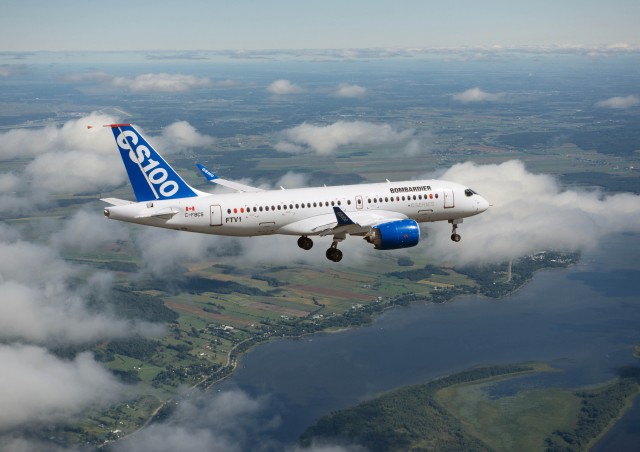
The CS100 during test flights – Photo: Bombardier
Bombardier’s in a bad way lately. Their stock has hit some heavy chop, recently dropping 32% in a three-day period. There’s a margin warning. The company is pricing in a “bankruptcy scenario”. On top of that, the stock fell 11% after they announced the removal of their troubled CEO.
The company is ridiculously leveraged. The cost of a credit default swap on Bombardier has risen 500 basis points. There are even serious questions regarding the company’s liquidity.
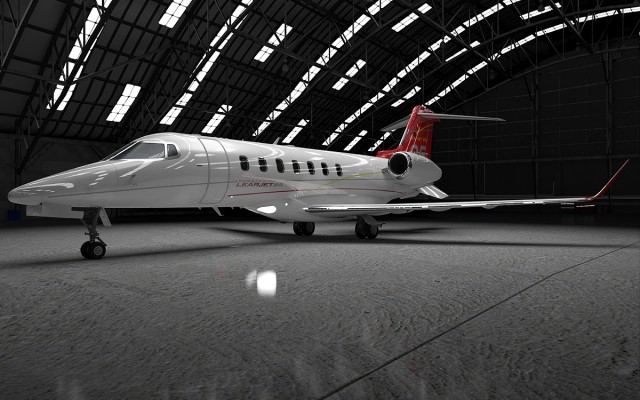
The Learjet 85 – Photo: Bombardier
This whole mess started when the company announced that it was “pausing” its advanced, composite, Learjet 85 for an indefinite period of time due to lack of demand. Now, canceling a business jet should not result in massive investor panic and questions over the viability of a commercial program. The problem is, Bombardier finances a lot of its projects off of the revenue generated by its business jet division and debt. The CRJ and Q400 program, along with trains, are relatively low margin.
There’s a reason investors are starting to, in the words of one firm “[give] up hope.”
Bombardier is suspending its shareholder dividends and working on raising an additional $2.1 billion in capital.
The thing is, in the paraphrased words of Richard Aboulafia at the Teal Group, these moves display a startling amount of intelligence and transparency. The question is, is it too late for Bombardier?
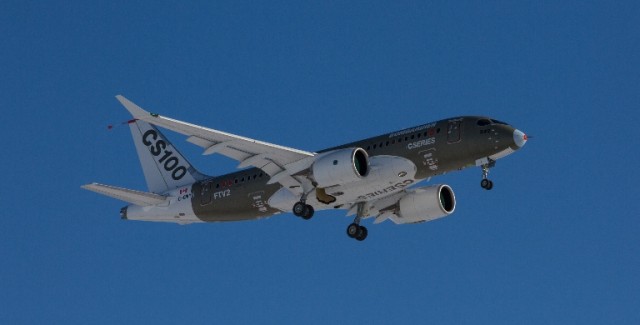
Bombardier CSeries Flight Test Vehicle 2’s first flight on January 3, 2014 – Photo: Bombardier Aero
Bombardier Aerospace has confirmed that the Entry-Into-Service (EIS) of their CSeries aircraft is now scheduled for the second half of 2015.
Yesterday’s announcement likely wasn’t a surprise to industry watchers and financial analysts, who have believed that Bombardier’s previous ’œone year after first flight’ EIS of September 2014 was overly optimistic and aggressive. The CSeries is Bombardier’s first ’œclean-sheet’ design in decades, with state-of-the-art fly-by-wire flight controls, along with sophisticated, highly-integrated aircraft systems. Bombardier is no doubt hoping that the new EIS schedule will be looked at as realistic and achievable, given the work to be done.
’œWe are taking the required time to ensure a flawless entry-into-service. We are very pleased that no major design changes have been identified, this gives us confidence that we will meet our performance targets,’ said Mike Arcamone, President, Bombardier Commercial Aircraft. ’œWhile the process has taken more time than we had expected, our suppliers are aligned with the program’s schedule and together, we will continue to work closely to move the program steadily forward.’
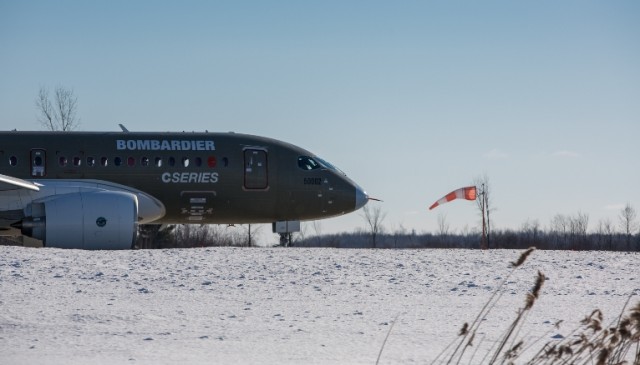
CS100 FTV2 on a cold, windy winter day at Mirabel Airport (YMX) – Photo: Bombardier Aero
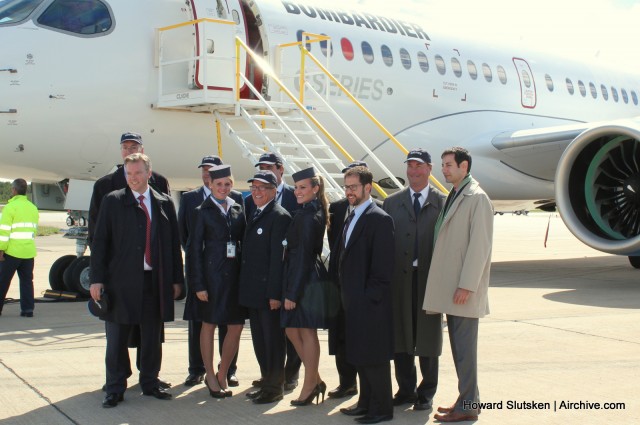
Mr. Robert Deluce, Porter Airlines President & CEO (center) with his team
after CSeries Flight Test Vehicle 1’s (FTV1) first flight on September 16, 2013.
It’s been over six months since Porter Airlines announced their conditional order to buy up to 30 Bombardier CS100s. In order to finalize the order, Porter needs permission from the City of Toronto to operate the CS100s at Billy Bishop Toronto City Airport (YTZ), and has asked for extensions to be added to both ends of the main runway at the waterfront airport. Currently, jets are not allowed to operate from YTZ, and Porter flies Bombardier Q400 turboprops from their YTZ base.
BONUS: Review- Flying Porter Airlines From Toronto to Montreal and Back
On Thursday morning, Toronto’s Deputy City Manager filed a report that analyzed Porter’s requests. Simply, it says that granting approval is premature. Among issues cited, there isn’t yet enough noise or operational performance data on the CS100; runway extension impact and noise modelling has not been completed; and there isn’t a clear direction or plan for YTZ’s expansion, and how it will be funded is in question.
In addition, the agreement banning jets at YTZ expires in 2033, and the report says that the impact of Porter’s request should be considered before this no-jet-noise agreement is extended. Overall, the report recommends that research continue, and that a new report be filed in March 2015. Thursday’s report will be considered by the City’s Executive Committee on December 5th, and depending on the outcome, by the full Council on December 16th.
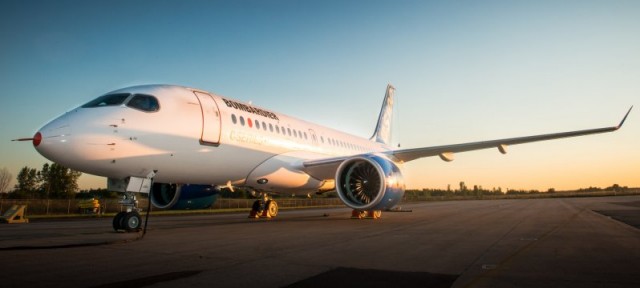
Bombardier CSeries Flight Test Vehicle 1 showing off its new paint job.
Photo: Bombardier Aero
UPDATE – Sept. 2: FTV1’s first flight is now even closer. Late last week, Transport Canada awarded Bombardier’s first CSeries plane its Flight Test Permit. This clears the way for FTV1 to begin high-speed taxi tests, and ultimately fly for the first time.
You can read Bombardier’s press release HERE.
ORIGINAL STORY – Aug. 23: Bombardier has dressed up its CSeries Flight Test Vehicle 1 (FTV1) in new “house” colors. After all, it’s always important to look your best when you’re going to a big party. And FTV1’s first flight certainly qualifies as a huge event for the CSeries’ program.
The new livery looks quite similar to the design we’ve seen in previous artist conceptions of the plane in the air. It has a white fuselage with blue tail and engine cowlings, and a cute little red tip on its nose. I’m thinking that the red is there to highlight the test plane’s air data probe, which won’t be on production aircraft. Be careful, you’ll put your eye out with that!
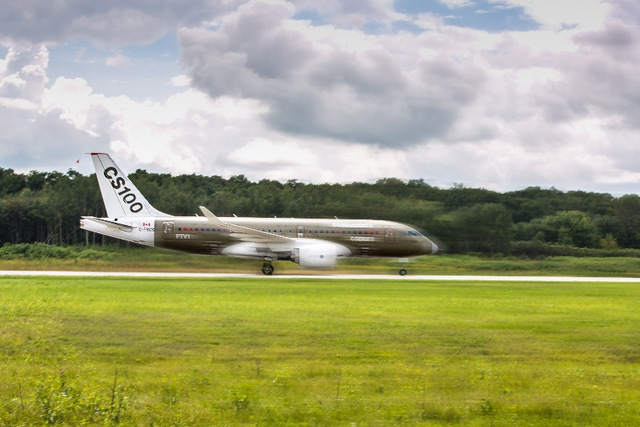
Bombardier CS100 FTV1 is rolling!
Photo: Bombardier
Bombardier Commercial Aircraft announced today that CSeries Flight Test Vehicle 1 (FTV1) has started slow-speed taxi tests at Mirabel Airport.
’œWe checked off yet another great series of accomplishments on the first CSeries aircraft. It was thrilling to see FTV1 move under its own power on the tarmac during the low-speed taxi runs this week,” said Robert Dewar, Vice President and General Manager, CSeries Program. He added, “I’m also pleased to share that FTV1 completed the high-powered engine runs while the aircraft was stationary. When full thrust was applied, we were able to run full vibration checks ’“ but most telling, the flight test team was extremely impressed with how quiet the engines were at full power.’
In addition to other final tests, FTV1 will soon head into the paint shop for a new “look”. FTV1’s first flight is still scheduled to take place “in the coming weeks.”
Click HERE to read Bombardier’s press release, and HERE to watch a video of the taxi tests.
Stay tuned!






